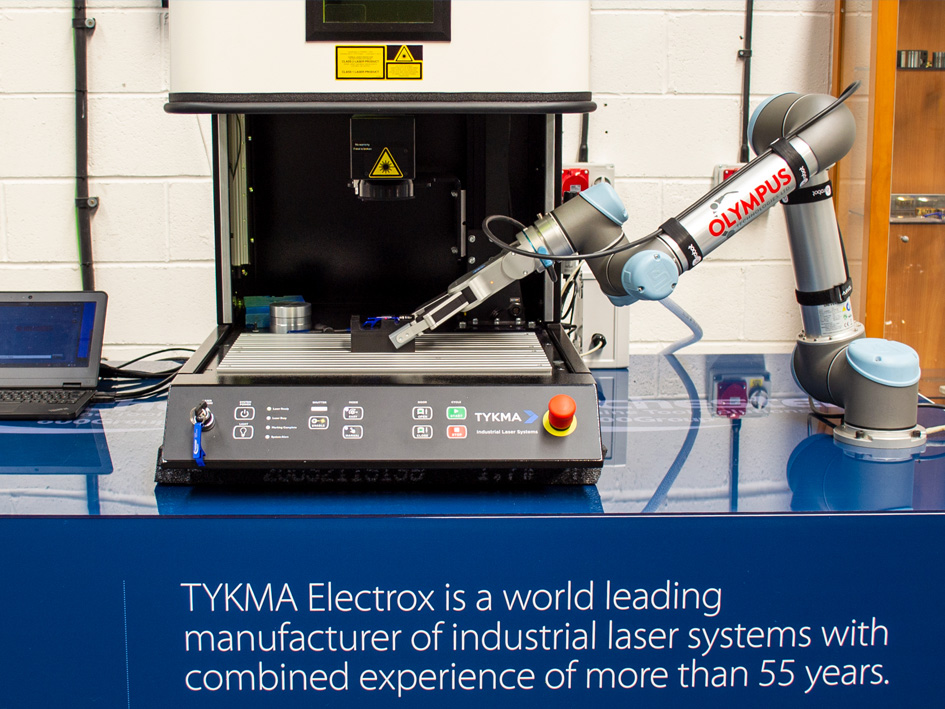Cobot welding helps medium sized businesses push more work through the cell with fewer stoppages and safer stations.
For many in the UK manufacturing industry, it is the ideal solution when product families change frequently and you need reliable quality without long changeovers.
This guide stays practical, covering welding processes, the welding parameters that matter, cobot programming shortcuts, QA routines, and simple ways to prove ROI.
When you are ready to design a cell, explore real packages and layouts on the Welding Automation page.
Which Cobot Welding Processes and Components Do You Need?
A cobot cell combines a collaborative robot, a welding power source, a welding torch, wire feed, and effective fume extraction.
Systems based on Universal Robots suit medium enterprises because the technology integrates easily with fixtures and software, and easy programming shortens commissioning.
Choosing the welding process.
Most cells use gas metal arc welding for speed and versatility. Flux cored arc welding helps when fit-up is variable and higher deposition is needed, accepting slag removal as part of the routine.
TIG is the precise welding process for thin parts, and laser is a low heat-input method when distortion must be minimal.
Your choice among these welding processes depends on geometry, base material, and the finish your company wants to achieve.
Getting torch, gas, and wire right.
Pick a torch neck angle that clears fixtures and protects access to end points. Match shielding gas and welding wire to your filler metal to control spatter, bead shape, and penetration.
Small adjustments to wire feed speed and arc length often make the visible difference between an average joint and a sound weld.
If thin gauge control or minimal distortion is critical, review the options in Laser Welding.
How Do You Keep a Collaborative Cell Safe and Compliant?
Start with a documented risk assessment, set safe speeds, and use scanners, light curtains, and interlocks. Control arc flash and fumes, verify earthing, and keep cables tidy. Provide operator training and emergency steps, and keep CE, UKCA, WPS, and any American Welding Society references together for certification audits. Strong safety practice helps you maintain uptime and protects people in a busy manufacturing environment.
How Can You Program a Cobot Welder Faster and Better?
Keep programming lean so operators spend less time at the pendant and more time producing parts.
- Path teaching and smoothing. Place waypoints so the arm flows, then smooth corners to avoid pauses at end points. Better motion helps the pool wet out with precision.
- Weave patterns and sensing. Use a compact library of weaves, then add touch sensing or seam finding when fit-up varies.
- Recipes and IDs. Link part IDs or barcodes to saved settings so jobs load instantly with correct offsets.
- Upskilling your team. Short, focused sessions and resources such as UR Academy build the knowledge operators and welders need for both cobot programming and robot programming.
Which Welding Parameters Should You Adjust First?
Dial in the fundamentals. These welding parameters are your primary levers for a stable solution:
- Wire feed speed and voltage. Set deposition and bead profile, and avoid burn-back.
- Travel speed. Balance fusion and heat. Too fast risks undercut, too slow drives distortion.
- Contact-tip-to-work and arc length. Stabilise the arc and cut spatter with small tweaks.
- Heat input. Use preheat and interpass control for thicker sections and to protect thin parts.
Consumables that support consistency.
Standardise liners, tips, and gas nozzles. Change on intervals, not failures, so the cell stays predictable.
Parameter quick guide
| Parameter | Effect on Bead | What to Adjust |
|---|---|---|
| Wire feed speed | Height, width, fusion | Raise for fill, reduce to limit heat |
| Voltage | Wet-out, spatter | Increase for flatter bead, lower for crown |
| Travel speed | Penetration, undercut | Slow for fusion, speed up to curb heat |
| CTWD or arc length | Stability, porosity | Shorten for tighter arc, lengthen if too hot |
What Upstream Steps Deliver the Biggest Efficiency Wins?
Great welds start before the arc strikes. Clean the base material, deburr edges, and confirm fit-up. Use clear datums and quick-change jigs so parts locate the same way every time.
Stabilise takt by automating handling around the cell: reduce queues with Machine Tending, prepare formed parts with Press Brake Tending, and add sealants where needed using Dispensing and Sealing.
These surrounding solutions help your line produce more with the same equipment.
How Do You Run a Time Study That Improves Takt?
Map the cycle in plain steps: load, tack, weld, inspect, unload. Highlight waits, then increase arc-on percentage with dual-station fixtures or shuttle tables.
For long parts, a rail or positioner lifts utilisation by keeping the torch on target without extra handling. Balance robot travel speed with deposition to keep the method stable and repeatable.
What Should a Good WPS Include and How Do You Control It?
A solid Welding Procedure Specification turns tribal knowledge into a repeatable solution.
Capture materials, joints, gas and wire, weave rules, travel speeds, QA steps, and any special construction notes. Version-control changes, require operator sign-off, and push released settings to every cell.
A clear WPS helps companies develop programs faster and onboard new welders at a consistently high level.
How Do You Keep Quality High at Production Speed?
- Define what a good bead looks like, with height and width windows and acceptable spatter.
- Decide where NDT fits, from penetrant to ultrasonic, and set sample rates by risk.
- Track first-pass yield and rework, then close the loop in the program or fixture.
Tight feedback cycles help you create a cost effective process that keeps quality steady as mixes change across the world of parts you build.
What Maintenance and Troubleshooting Routines Prevent Downtime?
Daily. Check tip, nozzle, liner, gas flow, wire path, and torch angle.
Weekly or monthly. Verify TCP, check backlash, and validate safety devices.
Quick fixes.
- Bird-nesting: check liner length, drive tension, and wire condition.
- Burn-back: adjust run-in or distance, review voltage and travel.
- Porosity: confirm gas flow, shorten arc length, clean the joint.
- Arc instability: replace worn consumables, recalibrate TCP, review filler metal.
Routine care helps you maintain uptime and protect manufacturing schedules.
Where Do Cobot Cells Fit Best and When Should You Scale?
Cobot cells shine on small to medium assemblies, repetitive seams, and multi-variant SKUs.
Common materials include carbon steel, stainless, and aluminium, each with its own welding process tweaks.
Add a rail or positioner for long parts, awkward orientations, or when you want a higher arc-on ratio without adding a second cell.
For many medium sized businesses, cobots are a cost efficient, cost effective way to produce more in the same footprint.
How Do You Measure ROI and Prove the Business Case?
Track arc-on percentage, parts per shift, first-pass yield, rework, and consumable cost. A simple model ties cost savings to outcomes: labour avoided plus scrap avoided plus throughput uplift, divided by capex.
Cells built on Universal Robots often show early gains because setup is fast and changeovers take less time. Over months, companies in manufacturing see a clear uplift in consistency and precision.
What Specifications Should You Finalise Before You Buy?
- Parts: materials, thicknesses, joint types, weld length per part
- Throughput: targets, shifts, allowed heat input and distortion
- Fixtures: datum strategy, available footprint, extraction and guarding
- Process: GMAW, FCAW, TIG, or laser, gas and wire, WPS and QA requirements
What Do Buyers Ask Most Often?
Can a cobot match manual quality on thin sheet?
Yes. With tuned welding parameters and correct fixturing, GMAW or TIG can produce a sound weld on thin parts. Laser is another technology when heat input must be minimal.
How fast are changeovers between SKUs?
Recipes and barcodes make changes quick. Most teams switch in minutes, which keeps throughput high.
Do we need special fixtures?
Use repeatable datums and quick-change bases. Good fixturing removes variation so the program hits the same end points every time.
What skills do operators need day to day?
Safety basics, loading, barcode selection, and simple recovery. Short training brings a welder up to speed on robotics, engineering choices, and shop-floor tasks.
Ready to Plan and Prove Your Cobot Welding Cell?
Plan a cobot welding cell with layouts, WPS guidance, and on-site demos on the Welding Automation page.
Working with thin or heat-sensitive parts? See new processes and options on Laser Welding.














